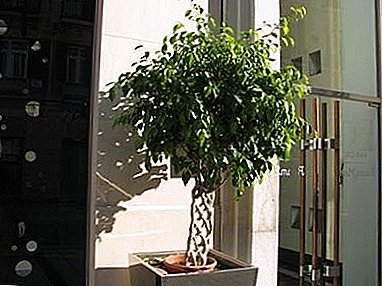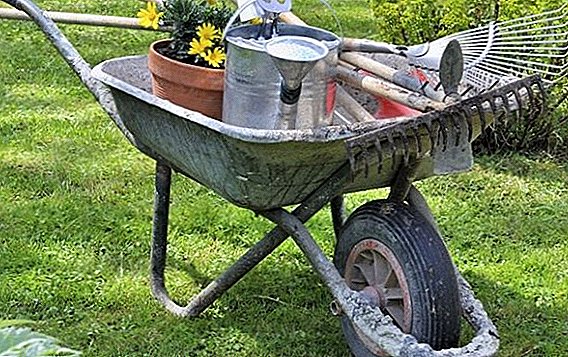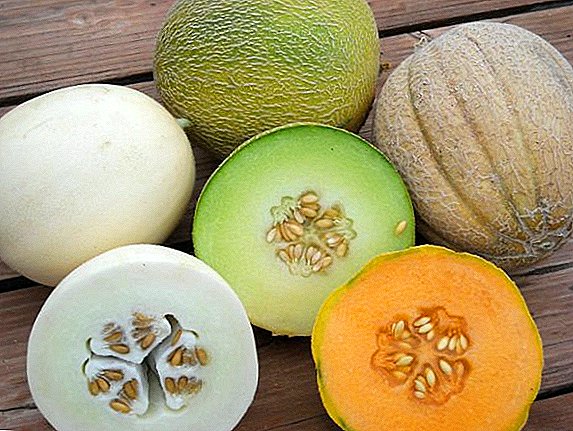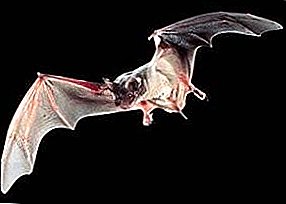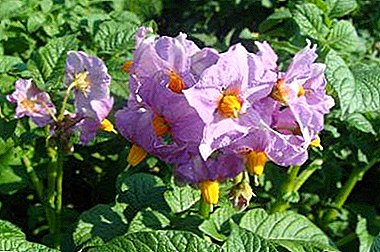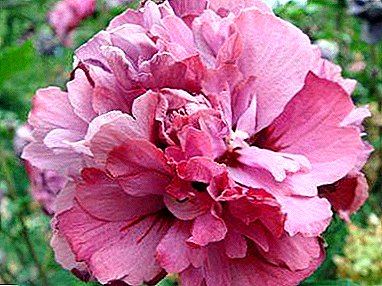
Many believe that hibiscus is a purely indoor plant. But it is not. Syrian hibiscus varieties Duc de Brabant lives perfectly in the garden.
This is a fairly tall shrub with fabulously beautiful flowers, also called the “Flower of Love”, a Syrian rose, or catima.
Hibiscus syriacus is one of the flowering shrubs that can winter in our latitudes. A good choice for a background plant, it looks gorgeous as a hedge, also planted in compositions with other plants and as a solo element of the landscape.
Botanical description
Hibiscus Syrian Duc de Brabant - perennial tree-like deciduous shrub with a lush crown. The plant belongs to the family Malvaceae. Fruiting brown boxes with five walls.
This variety has a slightly different name - Herzog de Brabant. And a few more variations: Hibiscus garden Duc de Brabant, Hibiscus terry Duc de Brabant, Hibiscus tree Duc de Brabant. The Latin name of the plant is "Hibiscus syriacus Duc de Brabant".
The bush can grow to a decent size: in height from 1.5 to 2 meters and in diameter up to 2 meters. Shoots of the Syrian guest are light brown, grow vertically. The foliage is dark green, shaped like chrysanthemum leaves. Duc de Brabant blooms with purple-red dense flowers with a dark center, the diameter of which reaches 14 centimeters. Flowering usually lasts from July to September. In this variety, like all hibiscus, flowers do not live long. But the plant has many flower stems, and therefore flowering is continuous.
Sort Duc de Brabant was bred in the Netherlands. Syrian hibiscus in the modern world is very widespread: it adorns the landscapes in China, Korea, and Western Asia.
A photo
Below you can see photos of Syrian hibiscus.



Plant Care
- Temperature. Frost-resistant Duc de Brabant is not particularly capricious in terms of temperature and in the winter can withstand up to -29 degrees.
- Watering. Since Duc de Brabant comes from hot countries, he needs moderate watering. But in especially hot and hot days it is better to give him additional servings of liquid.
Important! Mulching will reduce the rate of evaporation of moisture and create more comfortable conditions for the flower.
- Shine. This variety of Syrian hibiscus does not like shade, and therefore it is well suited for a warm and sunny place with light penumbra.
- Priming. For abundant flowering fertile and well-drained soil is needed. Good will be the following composition of the soil: foliage soil, turf soil, sand and humus in a ratio of 3: 4: 1: 1.
- Crop. Cut the flower you need to stimulate flowering and to give a more beautiful and decorative form (cube, ball or pyramid, whatever). The main pruning is best done in early spring.
- Remove old and dried branches and leaves.
- Healthy shoots are shortened by two thirds to stimulate future flowering.
- Then give the desired shape, cutting the branches around the skeletal branches.
- Feeding. In spring and summer, the plant can be fed fertilizer with phosphorus every two weeks. In the autumn it is better to fertilize phosphorus-potassium supplements, as they will make the bush more stable in winter.
Iron chelate can be added to the irrigation fluid - it will be a good prevention of chlorosis.
- Transfer. Hibiscus is a perennial plant. He can live well without a transplant to 20 years.
- Wintering. In winter, plants up to 3 years old need protection. Shrub need to spud high, mulch and tie spunbond.
Outdoor planting
Cuttings
 Propagate the Syrian hibiscus is much easier cuttings than seeds.
Propagate the Syrian hibiscus is much easier cuttings than seeds.
For breeding cuttings need:
- cut cuttings with 2-3 knots;
- put them in the water for rooting;
- after the emergence of roots, the escape should be transplanted into a container with the ground (garden soil with an admixture of peat will do);
- give the plant a wintertime under the roof;
- spring to land in open ground.
If desired, you can immediately plant a stalk in the garden, but then you need to worry about its weatherization for the winter.
From the choice of wintering place depends on the flowering time of the bush: with a warm variant, it comes earlier - the next year, otherwise - after 3 years.
Seeds
When propagated by seeds, Duke de Brabant's terryiness will not be passed on to its daughter plants, and they will only bloom in 4-5 years.
- Seeds are sown in separate containers and create greenhouse conditions for them.
- When a sixth leaf appears, young plants pinch on top, giving them a bush shape.
- As the flowers ripen, they are transplanted by transfer to more spacious pots and left for wintering in a room with cold air.
- The following year they are planted in a permanent place.
Briefly about diseases and pests
On hot summer days, aphid is particularly active. Its appearance is noticeable on shrunken dried leaves. Much less often, the Syrian hibiscus is attacked by a flower moth or sawfly. To prevent infection, as well as for treatment, you need to use insecticides.
Important! If you plant a lavender next to the hibiscus, you can not be afraid of aphids: the parasite is deterred by the smell of this flower.
Very often the hibiscus is improperly watered, and this is reflected in the plant by falling flowers and leaves.
Similar flowers
 The Species variety of Syrian hibiscus has the same double flowers as Duc de Brabant.
The Species variety of Syrian hibiscus has the same double flowers as Duc de Brabant.- Lavatera Ölbiyskaya - a beautiful perennial shrub from the Malvova family. The shape of its flowers resembles Duke de Brabant flowers, and the colors can be white, pink or red.
- Sudanese rose will also delight the owner of lush red flowers.
- The stock rose rose is another representative of the Malvines with a similar flower shape. It grows up to 2 meters and can make an interesting composition with Syrian hibiscus.
- Mallow variety Powder Puffs Mixed has large terry flowers of various shades.
Hibiscus Duc de Brabant is equally beautiful in the solo composition, and in company with other plants in the garden. It can be used as a beautiful hedge, you just need to plant a few bushes in a row. In any case, this simple in planting and unpretentious in the care of the shrub will be a real gift to any gardener.


 The Species variety of Syrian hibiscus has the same double flowers as Duc de Brabant.
The Species variety of Syrian hibiscus has the same double flowers as Duc de Brabant.